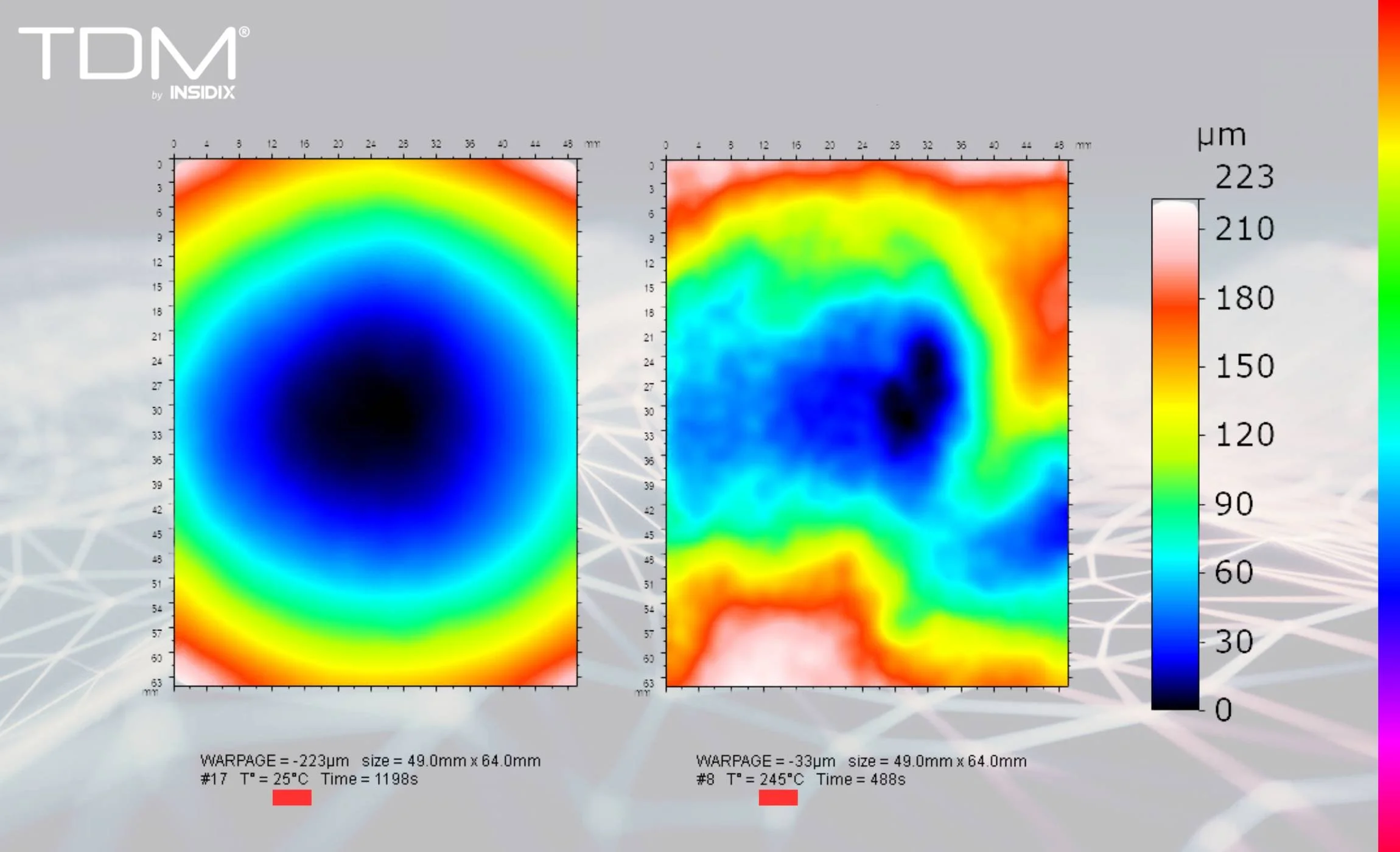Leveraging TDM to Enhance the Understanding and Elimination of Radial Cracks in TGV Substrates
The growing need for miniaturization and enhanced electrical performance in electronic gadgets has spurred the evolution of advanced packaging techniques. Through-Glass Via (TGV) technology, which incorporates glass interposer substrates with embedded copper vias, has surfaced as a beneficial option for high-density, high-performance interconnections. Nevertheless, the thermal discrepancy between the copper metallization and the glass substrate can result in the formation of thermo-mechanically induced radial cracks during annealing processes.
Challenges in TGV Manufacturing
The occurrence of radial cracks in TGV substrates presents a major challenge affecting device dependability and yield. Numerous factors contribute to this problem, such as:
CTE Mismatch: The substantial difference in the coefficient of thermal expansion (CTE) between copper and glass leads to considerable stress accumulation during thermal cycles.
Rapid Heating Rates: Swift heating rates can intensify stress buildup and hasten crack formation.
Flaw Sensitivity: Defects or imperfections in the glass substrate or metallization can serve as stress concentrators, facilitating crack initiation and growth.
The Role of TDM in Addressing TGV Challenges
Topography Deformation Measurement (TDM) technology provides a valuable means to tackle the issues related to radial crack formation in TGV substrates. By delivering real-time, high-resolution measurements of surface deformation, TDM empowers researchers and engineers to:
Monitor Real-Time Deformation During Heating
Track Warpage and Deformation: TDM can observe the warpage and deformation of the TGV substrate in real time as it goes through thermal cycles.Identify Critical Thresholds: Through the analysis of deformation data, researchers can pinpoint the critical heating rates and temperature ranges where crack initiation is most likely to take place.Map Stress and Warpage Across the Substrate
Visualize Stress Distribution: TDM can create 3D topographic maps of the substrate, illustrating the spatial distribution of stress and deformation.
Correlate Deformation with Crack Formation: By studying the deformation patterns, researchers can identify areas of high-stress concentration that are susceptible to crack formation.Fine-Tune Heating Rates
Optimize Thermal Profiles: TDM can assist in refining the heating rate profile to minimize stress accumulation and avert crack formation.
Validate Stress Relaxation Mechanisms: By observing deformation during varied heating rates, researchers can confirm the effectiveness of stress relaxation mechanisms, such as grain boundary sliding and diffusional creep.Validate CoupledThermo-Mechanical Models
Compare Simulation and Experimental Data: TDM data can be leveraged to verify the accuracy of coupled thermo-mechanical models, which are crucial for anticipating the behavior of TGV substrates under diverse thermal conditions.
Refine Model Parameters: By contrasting simulated and experimental deformation data, researchers can adjust the model parameters to enhance their predictive capabilities.Characterize Material Behavior
Analyze Deformation Mechanisms: TDM can offerinsights into the deformation mechanisms of copper metallization and glass substrates, including plastic deformation, creep, and fracture.
Evaluate Material Properties: By assessing the deformation response of the materials, researchers can evaluate howmaterial properties like CTE and yield strength influence crack formation.
TDM technology holds substantial promise for enhancing the understanding and prevention of radial crack formation in TGV substrates. By furnishing real-time, high-resolution measurements of surface deformation, TDM enables researchers to optimize manufacturing processes, boost product reliability, and fast-track the advancement of cutting-edge packaging technologies


